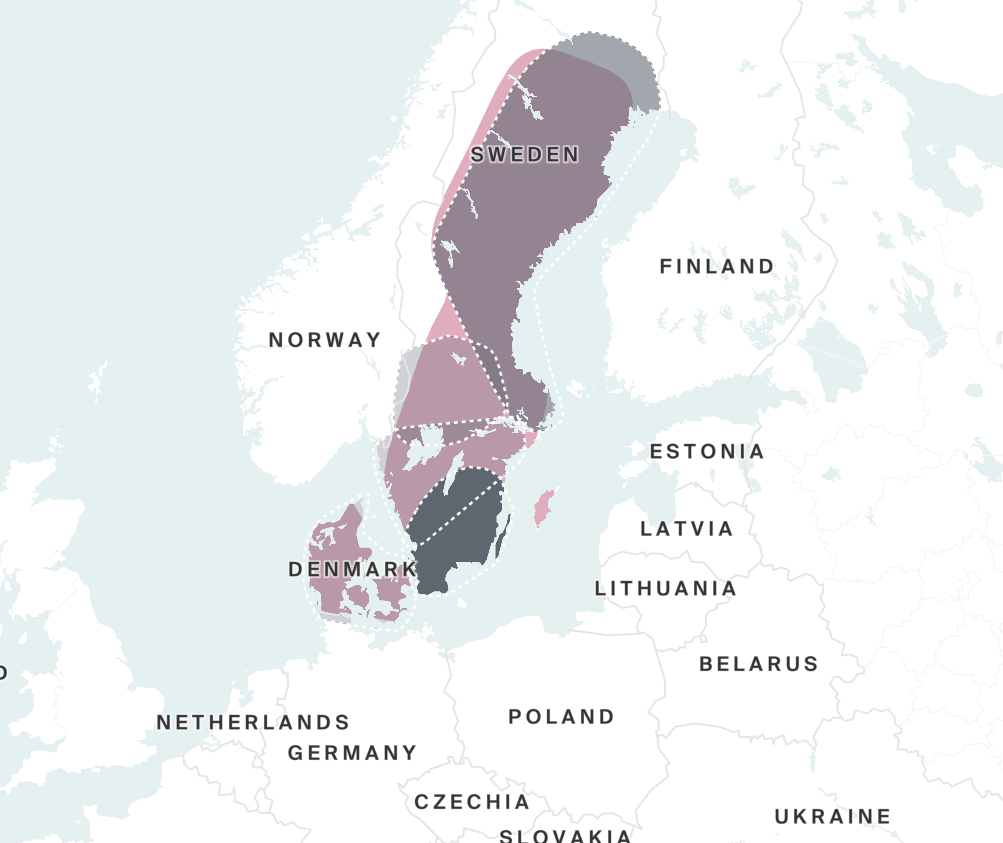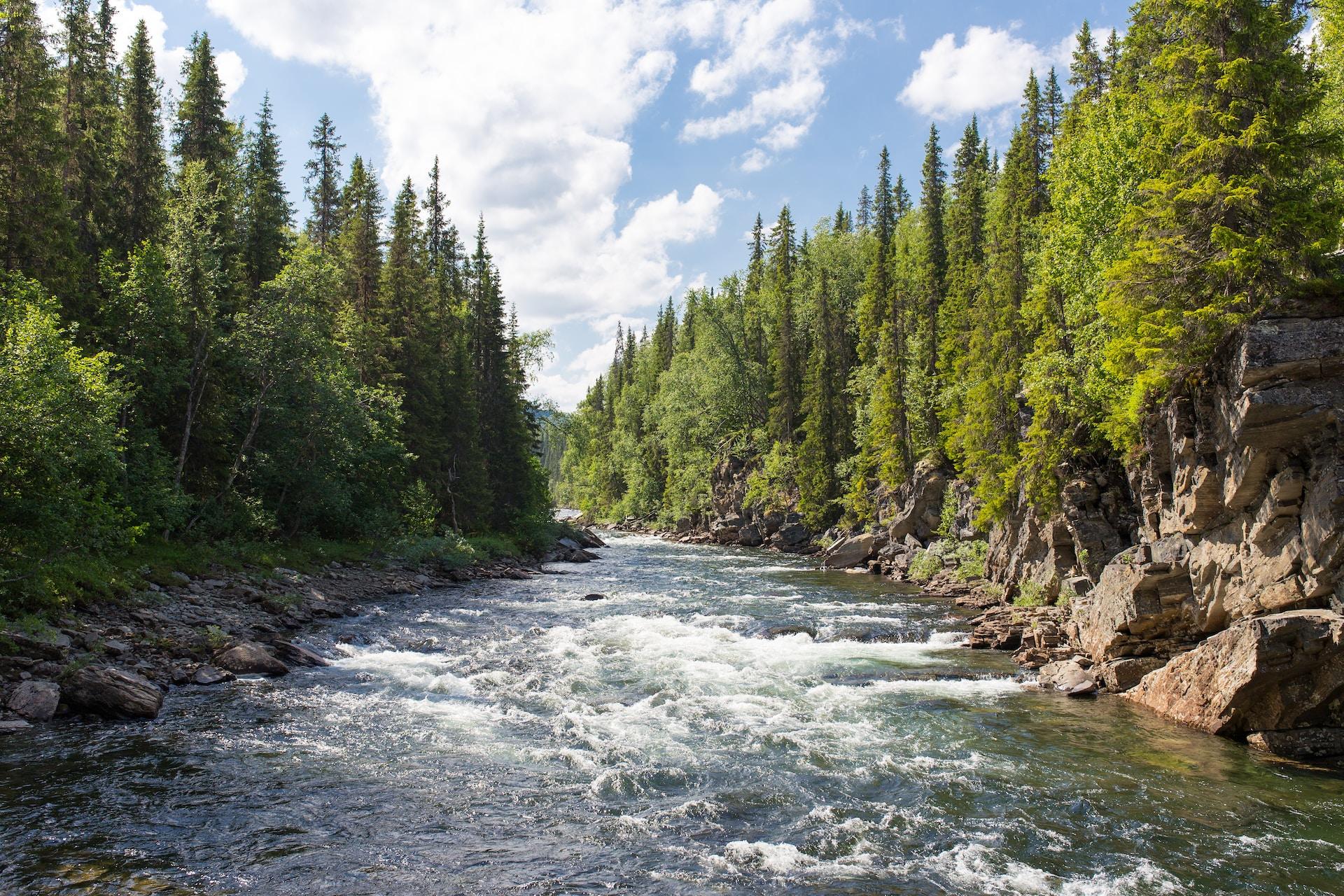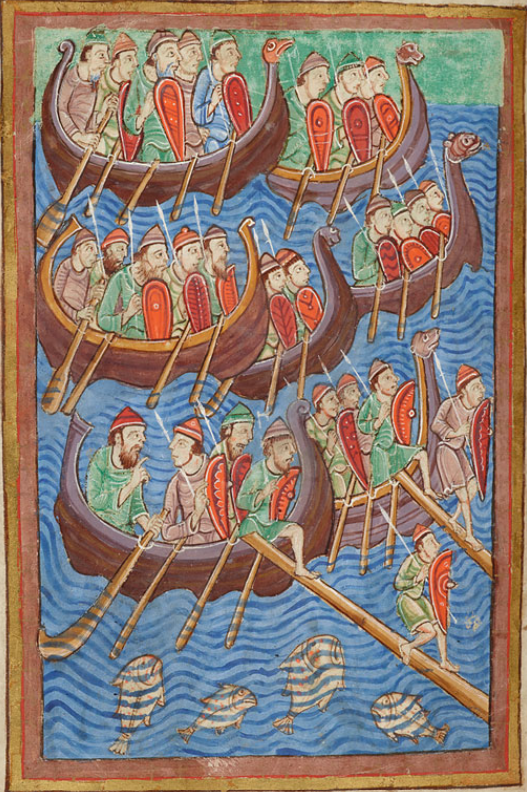What is Sweden & Denmark DNA Ethnicity on Ancestry?
The results of our AncestryDNA tests may sometimes be what we expect or on occasion may be a big surprise. Either way, often we need a little more information regarding some of the regions that arise in our ethnicity estimates.

One region that is not at all uncommon is the Sweden & Denmark DNA region. Those who still live in this region already understand all about its history and culture. There are others, however, who may never have even visited or in fact been aware that they have ancestors from that area.
In this post we will go into more detail with regards to the history, geography and culture of the Sweden & Denmark region. We will also discuss what it means to be from this region and how easy or difficult it might be to trace our roots in the Sweden & Denmark Region.
What Is the Sweden & Denmark DNA Region?
The Sweden & Denmark DNA region is found on the Scandinavian Peninsula and focuses mainly on the two nations of Sweden and Denmark. It is however also found in parts of Southern Norway and northwest Finland.

Sweden & Denmark DNA Region Subregions
The Sweden & Denmark DNA region has 5 different subregions within it all of which have multiple smaller DNA communities. These are beneficial for researchers because they may allow them to discover more accurately where their ancestors from the region may have originated.
Central & Southern Sweden
The Central & Southern Sweden subregion focuses around southern Sweden but does not quite reach the most southerly point of the nation. It ranges from Karlstad in the north, Stockholm in the north east and Halmstad in the South. There are an additional 15 communities listed in this subregion which are:
- Bengtsfors
- Dalsland, Bohuslän & Norra Västergötland
- Falkenberg & Varberg
- Falköping, Tidaholm & Ulricehamn
- Göteborg, Borås & Alingsås
- Halland & Södra Västergötland
- Kungsbacka, Onsala & Veddige
- Lidköping
- Mellerud & Åmål
- Munkedal & Lysekil
- Södermanland, Östra Västergötland & Närke
- Svenljunga & Tranemo
- Trollhättan & Vänersborg
- Västergötaland
- Västra Bohuslän
Central Sweden
The Central Sweden subregion covers a small region that is indeed in Central Sweden but in the western range it also enters into eastern Norway. It includes Kingsvinger in Norway as well as Vasteras, Falun and Karlstad in Sweden. There are 17 smaller communities within this subregion which are:
- Arvika
- Borlänge, Avesta & Ludvika
- Dalarna
- Eastern Värmland
- Falun
- Filipstad
- Grums & Kil
- Hagfors
- Karlstad
- Kristinehamn & Storfors
- Mora & Leksand
- Norra Värmland
- Orsa & Rättvik
- Säffle & Åmål
- Sunne
- Torsby
- Värmland
Denmark
The Denmark subregion as the name suggests covers the nation of Denmark and a small region of southern Sweden. It includes Hoganas and Landskrona in Sweden as well as part of Northern Germany near the land border it shares with Denmark. There are 10 smaller community regions in this subregion which are:
- Aalborg
- East Jutland
- Funen, Lolland & Falster
- Hjorring
- Jutland, Zealand, Funen, Lolland & Falster
- Lolland, Falster & Møn
- North Jutland
- Viborg & Hjorring
- West & South Jutland
- West Hjorring
Northern Sweden
The Northern Sweden subregion covers the majority of north and east Sweden ranging across most of the country's landmass with the exception of the southern and western regions. Although it is the largest subregion it only has 4 additional communities that fall within its range these are:
- Ångermanland
- Norrbotten
- Uppland, Gästrikland & Hälsingland
- Västerbotten & Norrbotten
Southern Sweden
The Southern Sweden Subregion as the name suggests consists of the most southerly area of the country as well as the Islands between Sweden’s southwest coast and Denmark's northeast coast. Additionally Elsinore, Espergaerde and Humblebaek in mainland Denmark fall into this subregion. Although much smaller than the Northern Sweden subregion the Southern Sweden subregion has no fewer than 23 further community regions which are:
- Älmhult
- Halmstad & Varberg
- Hässleholm & Kristianstad
- Helsingborg, Landskrona & Ängelholm
- Högsby & Mönsterås
- Hultsfred & Oskarshamn
- Jönköping, Gränna & Nässjö
- Kalmar, Emmaboda & Orrefors
- Karlskrona & Torsås
- Laholm & Båstad
- Lessebo, Uppvidinge & Växjö
- Linköping, Åtvidaberg & Västervik
- Malmö, Lund, Ystad & Österlen
- Nordöstra Skåne & Västra Blekinge
- Norra Småland & Östergötland
- Östra Småland & Blekinge
- Sävsjö & Vetlanda
- Skåne & Södra Halland
- Småland & Halland
- Sölvesborg, Karlshamn & Olofström
- Tingsryd, Emmaboda & Ronneby
- Vaggeryd & Värnamo
- Värnamo & Ljungby
Sweden & Denmark Region History
After the Ice Age
Around 12,500 years ago the last ice age ended and vast glaciers receded north from northern Europe. As the sheet of ice moved northward it exposed the land of what is today the Scandinavian Peninsula. This new land was quickly explored by stone age mainland Europeans who traveled north between 9,000 and 1800 BC.
These hunters and gatherers followed herds of animals with the hunters ranging the furthest north in search of game. In the south groups would settle and start farming the land and building communities. These southern settlers also quickly developed boat building skills which kept them connected to mainland Europe.

The early settlers in the region spoke a language known as Old Norse, also known as donsk tunga (Danish tongue), which is the root of all known Scandinavian languages today.
Rise of the Vikings
These early settlers were for the most part content to lay down roots, living in independent clans, working the land and raising their families. However, following the Scandinavian Iron age (500 BC – 800 AD) things began to change. Advances in weapons and shipbuilding created the potential for exploration.
These iron age advances led to the Viking age (793 – 1066 AD). This era saw ships full of Norsemen travel throughout the seas and waterways of Europe. In some places, they would trade while in others they would raid.

The Swedish Vikings became merchant river explorers in Eastern Europe giving rise to the Varangian Vikings. They ranged through eastern Europe as far east as the Ukraine and Russia where they established strongholds. In the 9th century these Vikings created one of the first Slavic States, Kievan Rus.
The Vikings of Denmark along with the Norwegians raided and traded to the West across the sea where many settled in England. This gave rise to the Danelaw settlements in Britain.
How Did You Get Sweden & Denmark Region DNA?
If you already know that you had family who came from Sweden & Denmark or any of the bordering states then you know why you have Sweden & Denmark region DNA. If this result came as a surprise you may not know how exactly you came by DNA from this region.
If you have a sizable percentage of DNA from this region then it is likely you have an ancestor who was born in or close to the country of Sweden & Denmark.
Is the Result Accurate?
When it comes to ethnicity estimates the higher the percentage you have from a certain region the more likely it is to be accurate. If your percentage is low, however, then it is harder to pinpoint exactly where your most recent ancestors came from.

A low result could mean a distant ancestor from that region. It is best to focus on your highest rated region's matches to determine where your ancestors came from more recently. A low percentage can often be hard to locate because the ancestor in question could be many generations back in your tree.
How to Research my Ancestry from These Regions
The results of a DNA ethnicity test are of course a great place to start especially if there is an unexpected result found in the report. As always of course the DNA cannot tell the whole story and we need to actually do the research work.
A percentage on an ethnicity estimate means very little unless you follow through and start building up your family tree. The relevant ancestors may be several generations back and it may take a lot of research to discover who they were.
If you have specific regions mentioned in your report then you have a good idea of where your ancestor may have originated from. Ancestry DNA even has migratory information from some of these regions through to the final settlement places in the United States or elsewhere in the world.
Using Ancestry you may be able to determine not only who your ancestors were but where they are from in the region and perhaps the reason they decided to move.
Sweden & Denmark Migration
The earliest mass migrations from Sweden and Denmark began in the Viking age. This is because not only were the seafaring Vikings raiding and taking slaves but they were also settling throughout Europe. Sweden and Denmark are limited in terms of suitable farming land so with a growing population claiming land was important to these raiders.
This would leave behind a legacy of Scandinavian DNA throughout Europe which can still be seen today in small percentages in Ethnicity reports.
Later in the mid 19th century the draw of the United States attracted millions of European immigrants including Swedes and the Danish. Again the need to find opportunities for a growing population brought immigrants to the US seeking land and work.
Colonies developed in western Illinois, Iowa, central Texas, southern Minnesota, and western Wisconsin. By the end of the American Civil War census records showed some 18,000 Swedish born individuals resident in America.
Final Thoughts
The Scandinavian nations of Sweden and Denmark make up the Sweden & Denmark DNA region. A northern European region the peoples native to Scandinavia developed in tough conditions and became one of the most feared peoples of the first millennium.
The blood of the Vikings still courses through their veins and has extended around the globe. Many Europeans may find some Scandinavian DNA in their ethnicity reports and this still seafaring nation has extended its reach well beyond Europe into the New World. In fact Vikings were the first Europeans to arrive in the Americas hundreds of years before Columbus.
Link To or Reference This Page
We spent a lot of time downloading, cleaning, merging, and formatting the data that is shown on the site.
If you found the data or information on this page useful in your research, please use the tool below to properly cite or reference Name Census as the source. We appreciate your support!
-
<a href="https://namecensus.com/blog/what-is-sweden-denmark-dna-ethnicity-on-ancestry/">What is Sweden & Denmark DNA Ethnicity on Ancestry?</a>
-
"What is Sweden & Denmark DNA Ethnicity on Ancestry?". NameCensus.com. Accessed on May 4, 2024. https://namecensus.com/blog/what-is-sweden-denmark-dna-ethnicity-on-ancestry/.
-
"What is Sweden & Denmark DNA Ethnicity on Ancestry?". NameCensus.com, https://namecensus.com/blog/what-is-sweden-denmark-dna-ethnicity-on-ancestry/. Accessed 4 May, 2024
-
What is Sweden & Denmark DNA Ethnicity on Ancestry?. NameCensus.com. Retrieved from https://namecensus.com/blog/what-is-sweden-denmark-dna-ethnicity-on-ancestry/.
